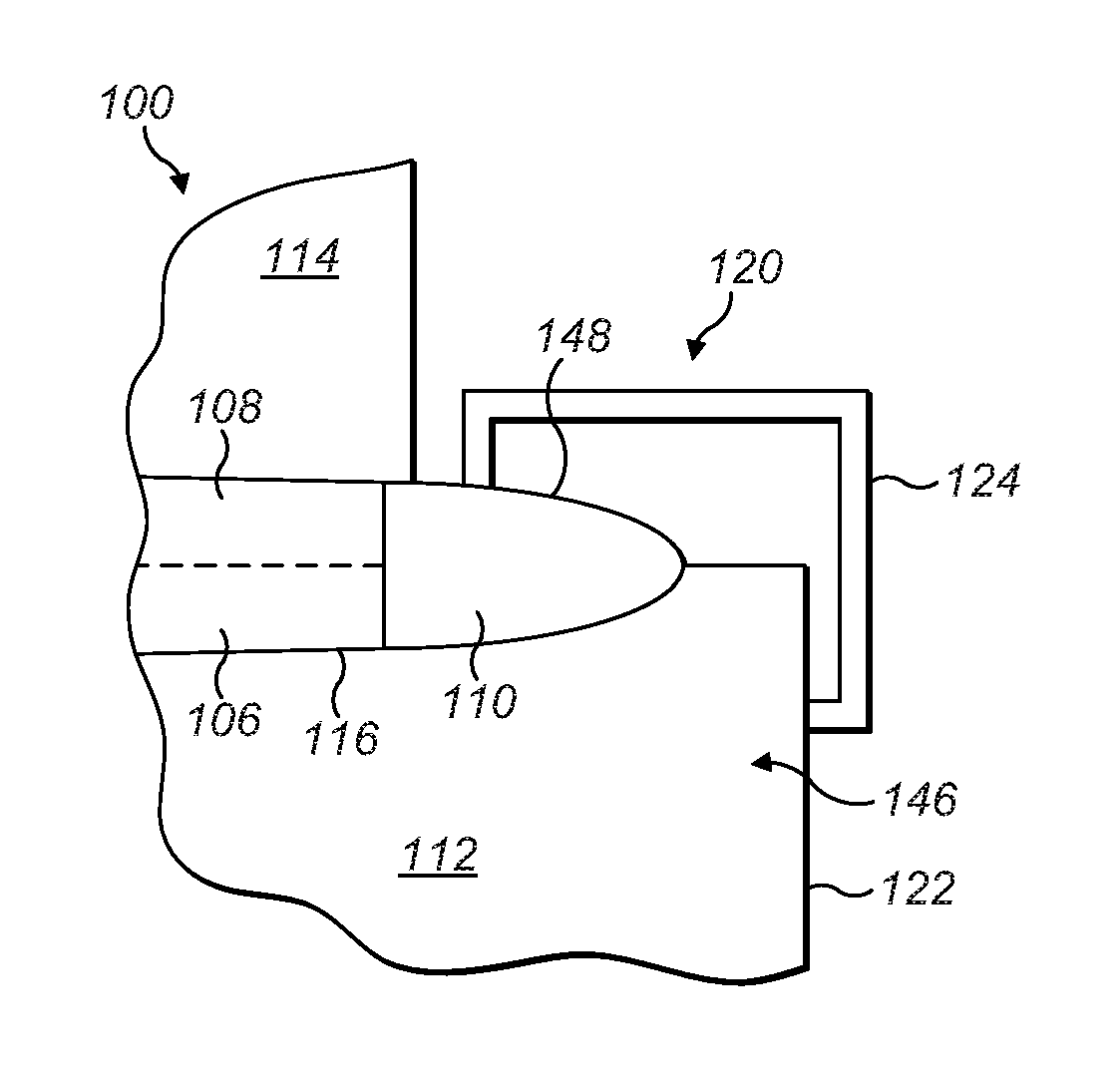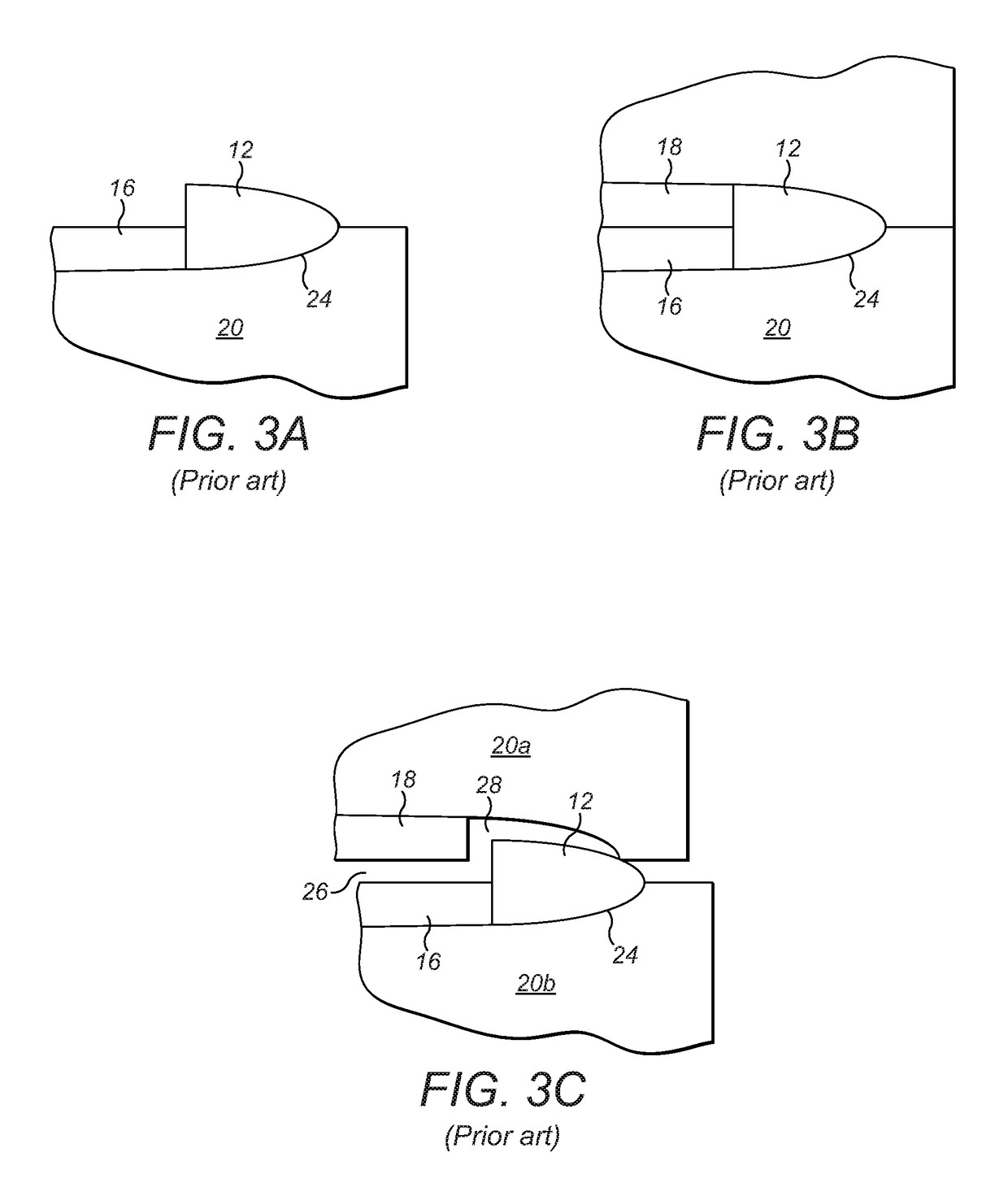Wind turbine blade with lightning protection
a technology blades, which is applied in the field of wind turbine blades with lightning protection, can solve the problems of smt b damage, problems such as problems such as problems such as damage to smt b, and achieve the effect of reducing the risk of damage and reducing the risk of insufficient conta
- Summary
- Abstract
- Description
- Claims
- Application Information
AI Technical Summary
Benefits of technology
Problems solved by technology
Method used
Image
Examples
Embodiment Construction
[0048]FIG. 4 shows a cross-sectional view of a mould assembly 100 according to an embodiment of the invention. Specifically, the mould assembly 100 is for moulding a wind turbine blade 102 that comprises an outer shell 104 formed from two half shells 106, 108, and a lightning receptor in the form of a solid metal tip (SMT) 110 integrated with the outer shell 104. Each half shell 106, 108 of the outer shell 104 is moulded from glass-fibre reinforced plastic (GRP).
[0049]The mould assembly 100 comprises two mould halves: a first mould half 112 for moulding the first half shell 106, and a second mould half 114 for moulding the second half shell 108. The mould assembly 100 has an open position in which the two mould halves 112, 114 are spaced apart, and a closed position in which the two mould halves 112, 114 are brought together, as shown in FIG. 4.
[0050]Each mould half 112, 114 extends along a longitudinal axis and comprises an inner mould surface 116 (FIG. 5) for moulding its respecti...
PUM
| Property | Measurement | Unit |
|---|---|---|
| length | aaaaa | aaaaa |
| metallic | aaaaa | aaaaa |
| distance | aaaaa | aaaaa |
Abstract
Description
Claims
Application Information
 Login to view more
Login to view more - R&D Engineer
- R&D Manager
- IP Professional
- Industry Leading Data Capabilities
- Powerful AI technology
- Patent DNA Extraction
Browse by: Latest US Patents, China's latest patents, Technical Efficacy Thesaurus, Application Domain, Technology Topic.
© 2024 PatSnap. All rights reserved.Legal|Privacy policy|Modern Slavery Act Transparency Statement|Sitemap



